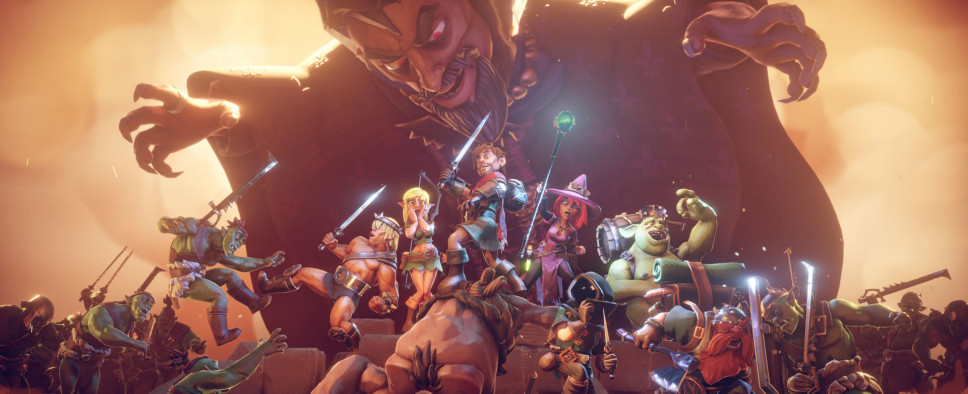The Dungeon of Naheulbeuk: The Amulet of Chaos Review - Page 2
-
Category: ReviewsHits: 13077

Article Index
It has some really nice quality of life options, like reversing camera rotation and deciding whether or not you want your minimap to rotate as well. But then, you have to do all that rotating with the keyboard, as there's no way to rotate the camera with the mouse at all.
The game has no shortage of voice acting, to the point where you can even pick between two different narrators. But then, there’s also a number of unimportant NPCs with maybe a few paragraphs of text between them and no voice acting whatsoever.
There are options to determine the frequency of character barks during exploration and combat, and you can even individually mute certain characters. But then those barks happen seemingly at random, with very little connection to what’s actually happening on the screen.
The game is permeated with stuff like this that makes very little sense and prevents it from realizing its full potential.
Gzor’s Nightmare
For such a zany, light-hearted title, the game boasts a fairly impressive turn-based combat system. In fact, even if you absolutely can’t stand all the jokes, you might still enjoy this title purely thanks to its combat. True, it can’t quite match the great encounter design and variety of Blackguards or the tense pacing and resource scarcity of Dungeon Rats, but it can at the very least be mentioned in the same ballpark as those games.
And while on the surface it looks like your standard 2 Action Points, cover-based experience, there’s a good deal of creative mechanics and unique solutions to common design questions here.
Take initiative, for example. The turn order is determined by the Courage stat. Given the same Courage, Agility is compared. If that's the same as well, the higher level goes first. And if the levels are the same, only then do you get a random roll.
And in general, while there’s plenty of randomness in the combat system, I found it to be very fair and measured. Not only is the game pretty generous with skills that always land, every time an enemy manages to dodge or parry your attack, their chance of doing so gets cut in half for the rest of the turn. This gives you another thing to consider when planning your turn and ensures that even if an enemy has a natural 90% dodge chance, you can still get him.
And even should you fail, it’s not the end of the world. The game has a special party-wide “Randomia gauge” that fills upon things not going your way, like when your attack critically fails and instead of setting your enemies on fire covers the battlefield in chickens. Fail enough times, and you’ll get access to some special skills that grant you extra turns or let you heal your entire party.
Underneath all that is a fairly straightforward but not too simplistic ruleset based around six primary attributes and a good dozen of secondary stats. On top of those, each character has unique active and passive skill trees separated into five tiers.
Take the Ogre for example. His attributes and skills make him sturdy and surprisingly fast, and second only to the Barbarian in dealing damage. But then, he also has a special interaction with the Dwarf that’s a lot of fun. And while exploring, he can bust through certain walls and lead you to some extra loot. Stuff like this helps better define your heroes, and in my opinion, more than makes up for the lack of custom characters.
The game also has an interesting Support system. If one of your characters is facing an enemy and another one attacks it, the second character will get an accuracy bonus determined by the first character’s Charisma. That’s on top of the bonuses provided by flanking or backstabbing. And beyond even that, each character has some passive skills built around the idea of being adjacent to others, making smart positioning even more important.
You’ll really want to figure all that out, as even on the default difficulty, the game isn’t a complete cakewalk and will throw some challenging encounters at you now and then. However, if you really want a challenge, you should jump straight into the hardest difficulty.
There, most of the early encounters will feel like a desperate fight for survival. Things will become easier once your heroes have gained a few levels and you’ve managed to equip them with some half-decent gear, but you’ll still get an occasional fight where everything is stacked against you, and you have to use every resource at your disposal to win.

